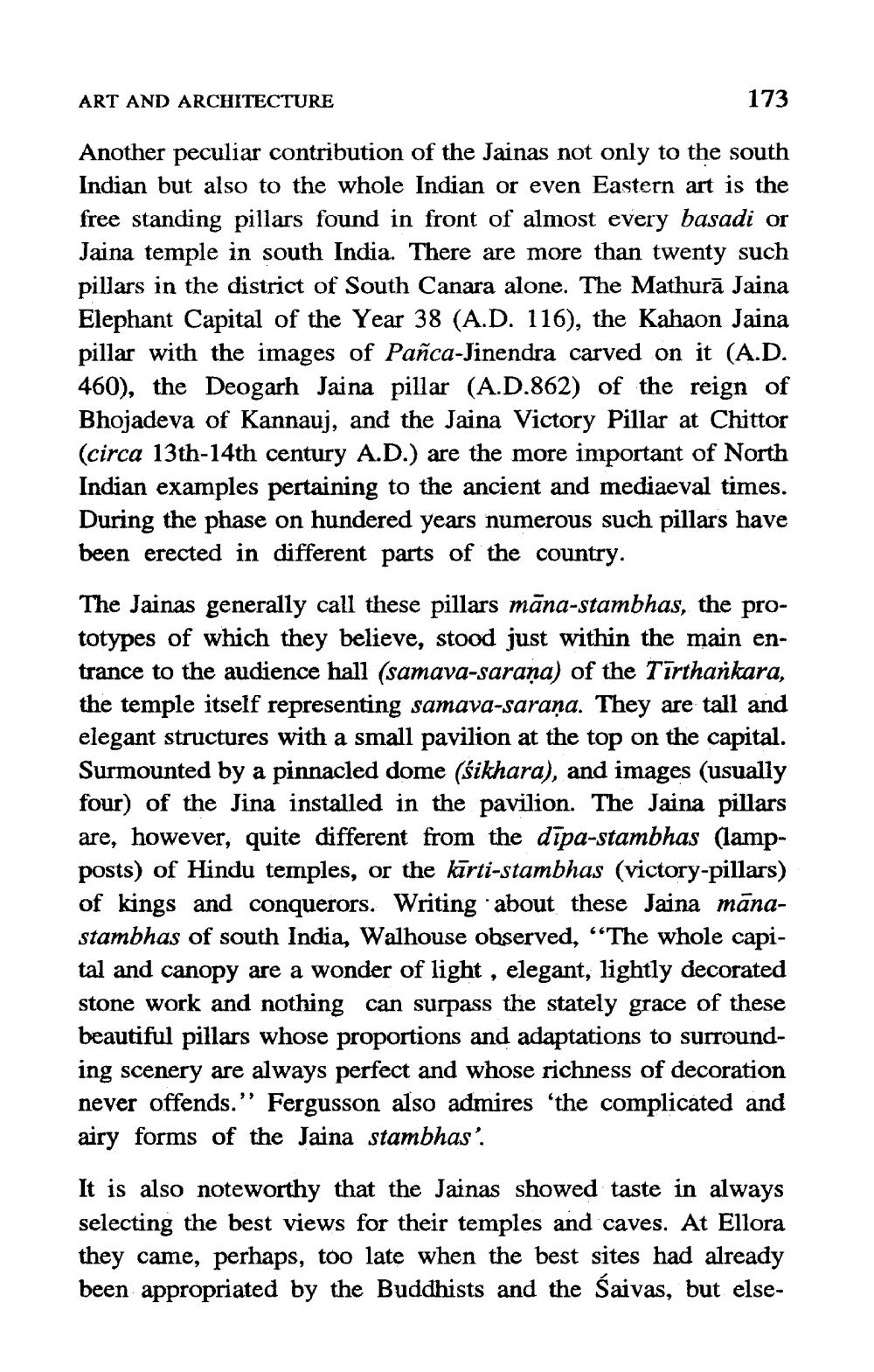________________
ART AND ARCHITECTURE
173
Another peculiar contribution of the Jainas not only to the south Indian but also to the whole Indian or even Eastern art is the free standing pillars found in front of almost every basadi or Jaina temple in south India. There are more than twenty such pillars in the district of South Canara alone. The Mathurā Jaina Elephant Capital of the Year 38 (A.D. 116), the Kahaon Jaina pillar with the images of Pañca-Jinendra carved on it (A.D. 460), the Deogarh Jaina pillar (A.D.862) of the reign of Bhojadeva of Kannauj, and the Jaina Victory Pillar at Chittor (circa 13th-14th century A.D.) are the more important of North Indian examples pertaining to the ancient and mediaeval times. During the phase on hundered years numerous such pillars have been erected in different parts of the country. The Jainas generally call these pillars māna-stambhas, the prototypes of which they believe, stood just within the main entrance to the audience hall (samava-sarana) of the Tīrthankara, the temple itself representing samava-saraņa. They are tall and elegant structures with a small pavilion at the top on the capital. Surmounted by a pinnacled dome (śikhara), and images (usually four) of the Jina installed in the pavilion. The Jaina pillars are, however, quite different from the dīpa-stambhas (lampposts) of Hindu temples, or the kīrti-stambhas (victory-pillars) of kings and conquerors. Writing about these Jaina mānastambhas of south India, Walhouse observed, “The whole capital and canopy are a wonder of light , elegant, lightly decorated stone work and nothing can surpass the stately grace of these beautiful pillars whose proportions and adaptations to surrounding scenery are always perfect and whose richness of decoration never offends." Fergusson also admires 'the complicated and airy forms of the Jaina stambhas'.
It is also noteworthy that the Jainas showed taste in always selecting the best views for their temples and caves. At Ellora they came, perhaps, too late when the best sites had already been appropriated by the Buddhists and the Śaivas, but else




